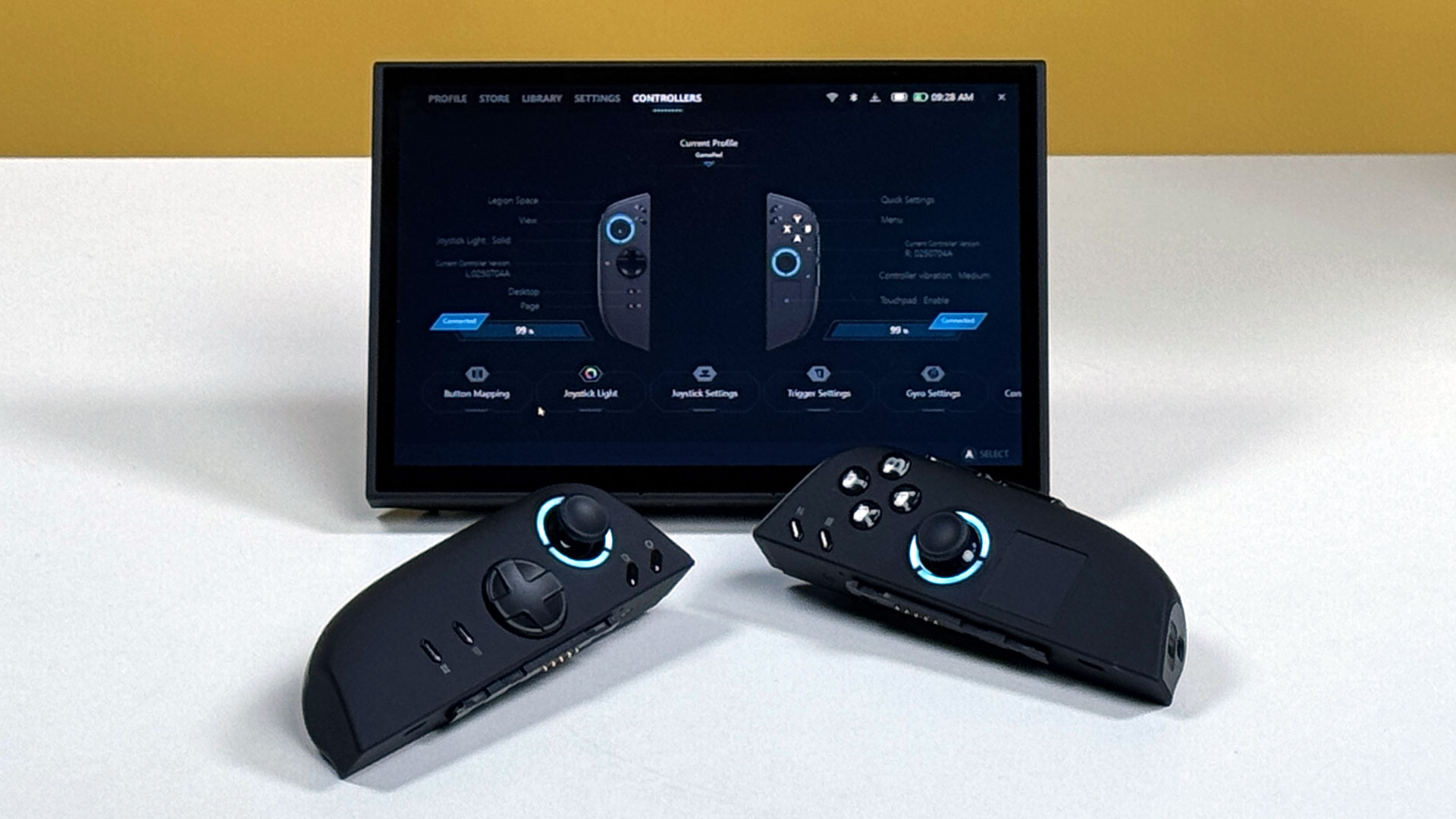Lenovo Legion devices running Linux set to get new 'Extreme' mode that fixes previously-broken power limits — only approved devices will be able to run the maximum performance mode

Lenovo Legion devices have different power profiles for controlling the performance of laptops and handhelds. Unfortunately, if you install Linux on these machines, the power profiles don't work correctly and often misreport their stats, causing stability issues. This has largely been a problem for the handhelds since they have to run on battery, where controlling wattage is crucial for a pleasant experience. But now, as reported by Phoronix, it seems like there's finally a fix coming.
Derek Clark, an independent developer who's done a lot for Linux support on Legion devices, has just pushed a patch series that adds proper support for an "Extreme" mode. If approved, only devices that are explicitly verified would be able to run this profile, ensuring users don't encounter bugs on lower-end or thermally-constrained units. To understand this a bit better, let's dial back and add a bit of context.
On Linux, the performance modes are handled by the Lenovo WMI GameZone driver, which is what translates Lenovo's firmware controls to the OS. Only certain models are designed to run the Extreme power profile because it sets the PPT/SPL values as high as possible, which would stress the cooling systems and, more importantly, destroy your battery life. Oftentimes, the CPU would consume power beyond what the battery can safely provide, so it's really only meant for plugged-in use.
"This series adds a new "extreme" platform profile mode and uses it for the lenovo-wmi-gamezone driver. It also prevents bugs that are being reported by some users by switching the current deny list to an allow list... These users will still be able to set extreme mode using the Fn+Q keyboard chord, so no functionality is lost. Currently no models have been validated with extreme mode," messaged Derek in his patch admission thread.

Despite being such a sensitive setting, the BIOS on some Legion devices would incorrectly report that they support Extreme mode when they very much don't. Since these devices are meant to run Windows by default, Lenovo's own utilities and software can communicate with the OS to avoid any mishaps — a luxury not afforded by Linux, where it would often be tricked into thinking the other way.
This would result in a conflict where turning on Extreme mode actually meant that you were just running the Performance mode and, in turn, using the so-called Performance mode would resort to the Balanced Mode, which led many to (falsely) dismiss it altogether. This is what Derek's proposed patch addresses; it fixes the profiles, adding support for a proper Extreme mode but keeps it disabled by default.
That's because no device is currently validated to run Extreme mode on Linux, likely due to insufficient testing and prior user complaints. Previously, the firmware would rely on a "deny list" that would ensure models not rated for the Extreme power profile wouldn't get an option for it, which is what was causing so many misreports. Derek switched this to an "allow list" instead, so only machines that are verified can run it.
Get Tom's Hardware's best news and in-depth reviews, straight to your inbox.
Accordingly, all Lenovo Legion devices on Linux should soon be able to enjoy correct power profiles, and perhaps by the time the patch is approved, there will be some models on the Extreme mode allow list as well. Linux is becoming a great place to game, especially for lower-end devices and handhelds that benefit from efficiency, as seen in our recent coverage of the ROG Xbox Ally X running Bazzite.

Follow Tom's Hardware on Google News, or add us as a preferred source, to get our latest news, analysis, & reviews in your feeds.

Hassam Nasir is a die-hard hardware enthusiast with years of experience as a tech editor and writer, focusing on detailed CPU comparisons and general hardware news. When he’s not working, you’ll find him bending tubes for his ever-evolving custom water-loop gaming rig or benchmarking the latest CPUs and GPUs just for fun.
-
ezst036 Gaming handhelds at the center of moving toward desktop Linux.Reply
Its a shame that this has to be independently fixed. All of these companies are stupid and blind to not see what is plainly happening right in front of them. The shift is on.
Due in part to screen size but several other factors including raw performance in multiple categories, Linux just offers the better all-around experience to make it the compelling upgrade. On a handheld game machine of this type, Linux has exclusivity on being "the fun one" to use unlike Windows which is kludgy, buggy, and bothersome.
Valve did this. Valve is slowly winning. -
Notton AFAIK, the software side of Lenovo handhelds has always been a step behind because Lenovo contracts the hardware+software out to a builder, and it's the builder's responsibility for updating the software.Reply
It's even worse on the Windows side because the Lenovo AMD drivers can be >6 months old without any sort of update that would fix issues on newer titles. Quite a few people resort to side loading from Asus's Ally drivers. -
excalibur1814 What we know: OEMs are lazy.Reply
What we WILL know: How naughty Valve can be. Will the world be better once Valve has their way? Probably not.
Steam machines. Never forget. -
mitch074 Lenovo's support varies by range - cheap IdeaPad have lousy support with a lot of subcontracted parts, while higher priced IdeaPads and ThinkPads usually enjoy much better and more reactive support, including on Linux.Reply -
mitch074 Reply
Well, they did try - it didn't work, so they cut their losses and tried later with the Steam Deck.excalibur1814 said:What we know: OEMs are lazy.
What we WILL know: How naughty Valve can be. Will the world be better once Valve has their way? Probably not.
Steam machines. Never forget.
While it WOULD have been nice to get better support on Steam machines, the fact that they didn't bury its hardware support behind binary blobs and instead chose to pay well-known open source developers and integrate into existing projects (instead of dirty forks with unreadable history, like Apple) while maintaining their own forks with proper open source licenses is, to me, worth some praise.